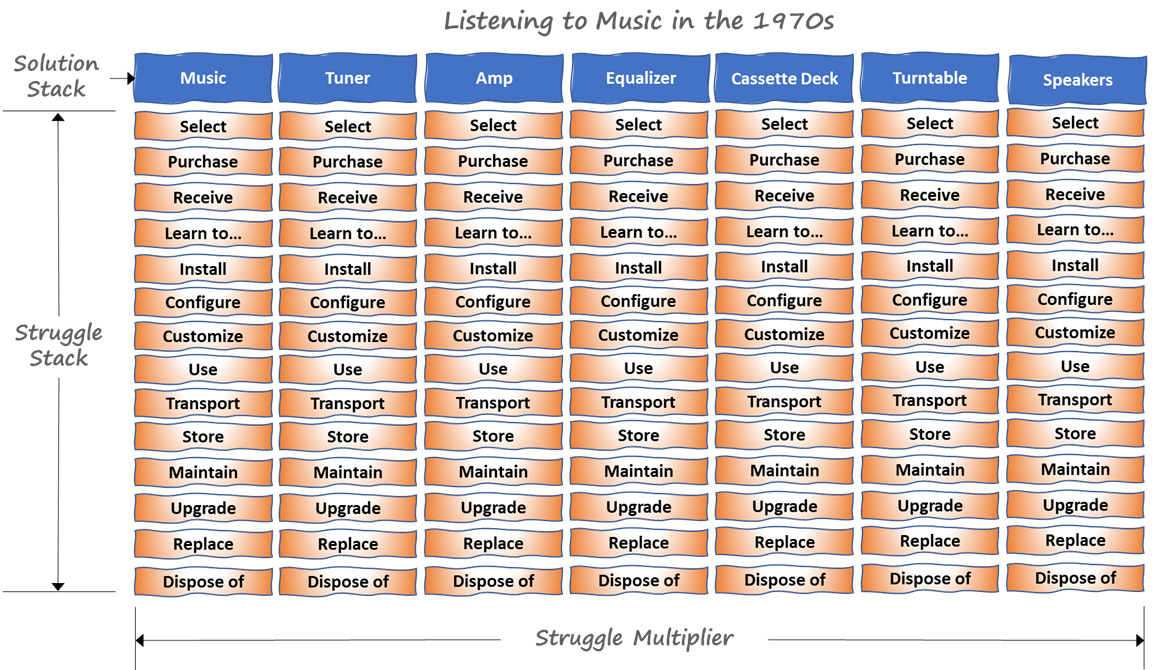Can we make customers loyal to our brand?
Let's look at what customers are actually loyal to using Jobs-to-be-Done
One of truest statements I’ve ever read - and one that I repeat consistently - is “local optimization leads to global sub-optimization” and I’m not sure who to credit it to. There are a few ways to look at this. The first is that we might focus on the sexy link in a chain and try to make it even sexier (think personalization, loyalty, etc.), while completely ignoring the fact that there is a weak link that is being ignored (the product stinks).
The other way to look at it is in a process, where we focus on a single step that improves quality but reduces flow, not recognizing that a downstream is now sitting idle because it has excess capacity. While that sounds great on the surface, we’ve created waste in a part of the process.
In a nutshell, this should tell us that when we fail to consider a process from end-to-end, we risk creating more problems, even if we significantly improved that one sexy area. So how does this tie into loyalty?
There are reasons that very few people go to the trouble of setting up an old-style component stereo system. You have to acquire each component which costs money and takes time. You need to set up and connect the components, so they work together which takes time and experience. You need to acquire the music media, e.g., vinyl albums, cassettes, CDs, etc. You need to store the music media and retrieve it when you want to listen to it. You even need to clean vinyl, turntable needles, and fix cassettes that have gotten goobered-up in the playing deck.
Guess what? Each of those things I mentioned ties back to an array of brands that used to be wildly successful…for a finite amount of time. Loyalty is not a fleeting thing, unless you’re talking about brands. And brand loyalty is a topic that is huge in marketing circles, and tactics to improve brand loyalty are constantly being optimized…locally.
Large amounts are invested in this exercise to essentially steal or retain customers with more relevant messages, but many times result in nothing more than expensive gimmicks. Consumers may value incentives - for example - in the short term, but those come at a price to the brand that cannot be maintained in the long term, e.g., dollars, reputation, etc. Consumers will ultimately abandon a brand. We all know this, but we keep doing it. Ask Blackberry how getting comfortable with a solution works out in the end.
“What’s going to change in the next 10 years? It’s a very common question…” ~Jeff Bezos
I’m harping on a point that I make regularly, customers are loyal to their job-to-be-done - like listening to music - and not your brand…unless you are constantly introducing significant new value and reduced complexity in a way that helps them get more of the job done better.
Turntables did not get the entire job done. Amplifiers did not get the entire job done. Record stores did not get the entire job done. People were trying to listen to music, and it used to be very difficult because the level of technology at the time made it that way. We were Okay with it, because we couldn’t imagine a better solution. That’s not a consumer’s job. That’s our job!
“What’s not going to change in the next 10 years? This is the more important of the two questions” ~Also Jeff Bezos
So, while marketing tactics should definitely be used to maximum value, we should never lose sight of the fact that tactics are not strategy. Strategy should be longer-term in nature and derived from a complete understanding of the problem-space. We should be willing to disrupt ourselves through a complete understanding and design our business to adapt.
I use the case of listening to music frequently because we can all understand it - and it doesn’t change. There is no amount of marketing or incentivizing that will get me purchase a component stereo system when I can carry an unlimited collection of music with me wherever I go, play it on whichever device I choose, and in any context that pleases me.
I’m loyal to listening to music, listening to podcasts, listening to audio books, learning new topics - etc. - which means I am also getting more jobs done on a single platform. I’m loyal to those jobs, and someone figured that out and created a simplified solution, while others continued to market irrelevant solutions until they ran out of time.
Make sure you understand the problem from end-to-end or you risk global sub-optimization = disruption. Business model success is not a marketing challenge.
Yes, there is a method to my madness. The point of this post is not to teach you how to create JTBD models, the point is to get you focused on how to see the outcomes that will define future solutions. While we are all invested in our day-to-day work, and most of us don’t have the broad oversight required to take on a core process from end-to-end, you should still always keep this in mind as you collaborate with other stakeholders in your organization. Product planners should target concepts that ensure designers create winning solutions. Marketers should dream of products that sell themselves, so their jobs are easier. No single part of the organization is going to make a business successful on its own.
If you do want to dive deeper into the method, check this post out on simplification of JTBD. It links to others, which link to others, etc.








